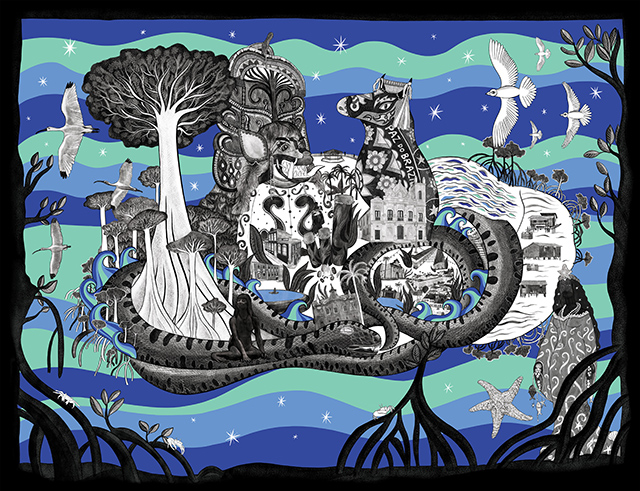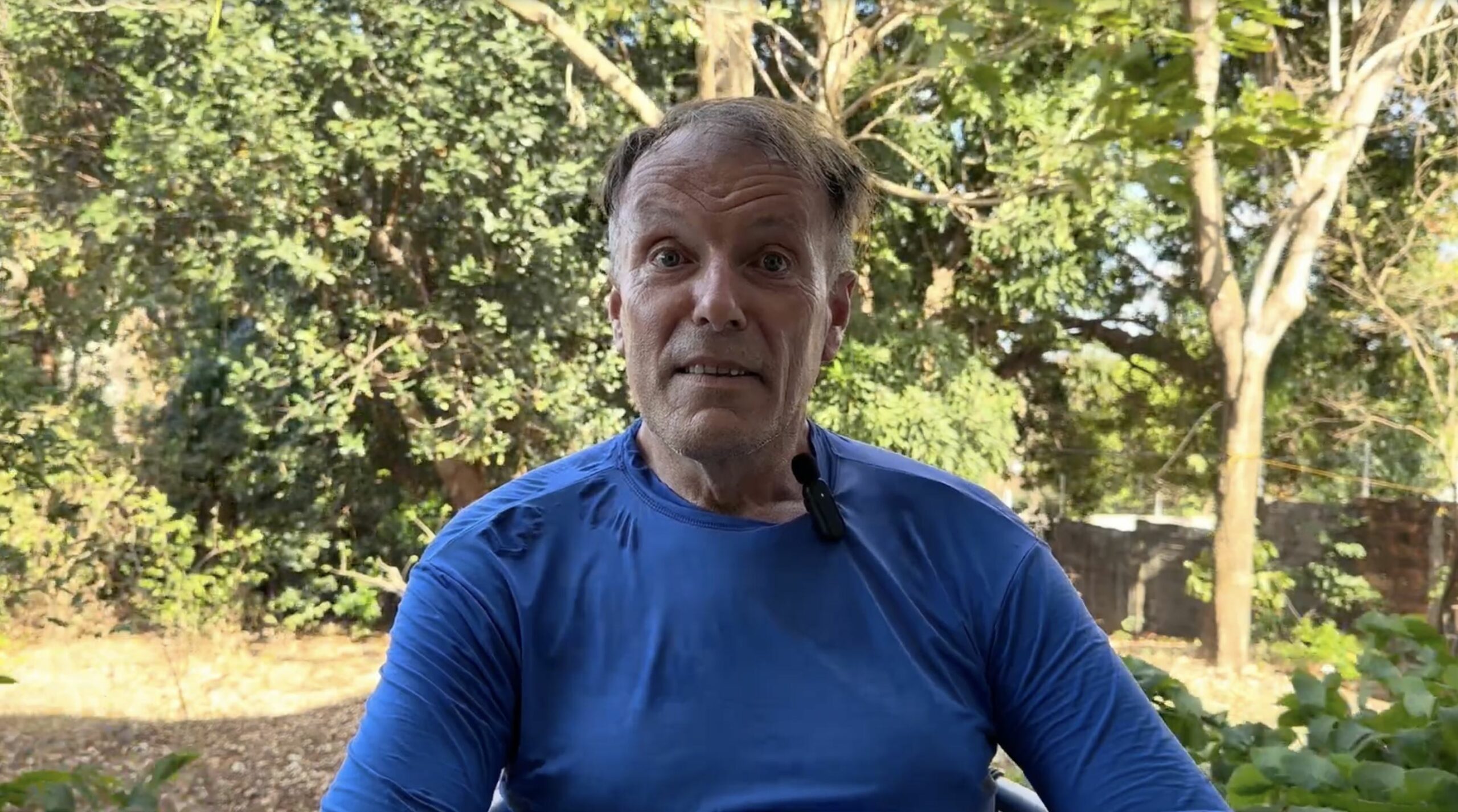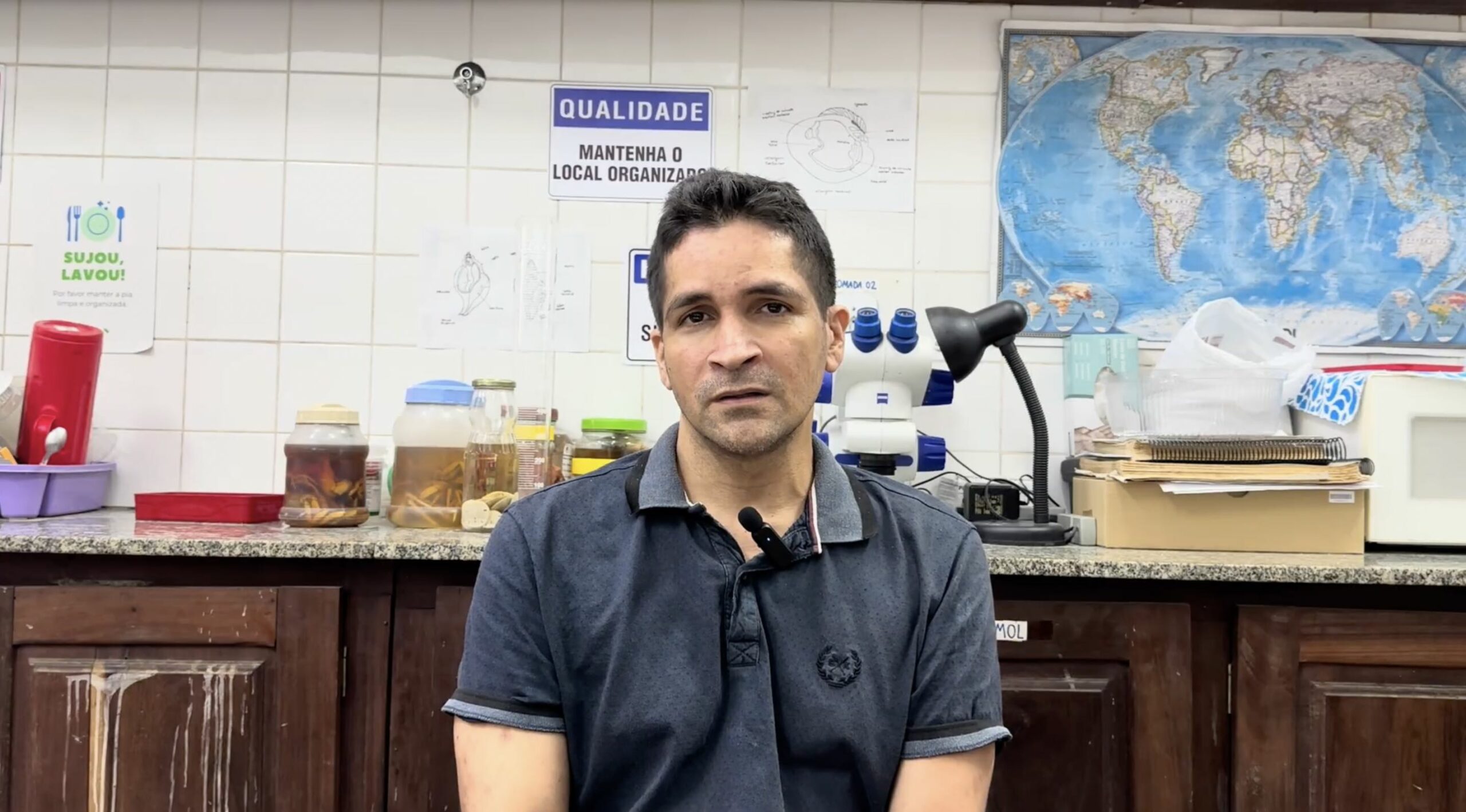
Flavio works as a consultant in microbiology and environmental quality indicators. Born in São Luís do Maranhão, he returned to the state in 2003. In his interview, he gives us an accurate and direct account of the critical state of the waters of the island of São Luís, between pollution, lack of sanitation and the lack of interest from the population and public authorities.
A career rooted in the study of life
‘I have been working in the environmental field since 2005, shortly after returning to Maranhão. My area of expertise is microbiology and its indicators related to soil and aquatic environments.’
Since 2003, upon returning to Maranhão, he has devoted himself to the study of microorganisms — bacteria, fungi, viruses — as tools for environmental diagnosis. In 2005, he began working as a monitor of the quality of the state’s aquatic and soil environments.
‘Maranhão is almost an island, a large continental island… It has 12 river basins, as well as the island of São Luís. The territory is rich in water, but the quality of this resource is very worrying.’
An abundant but degraded water resource
Flávio highlights the discrepancy between the abundance of water resources and their sanitary condition:
‘We have a lot of water, but the quality of our water is very questionable. The public authorities have information, but the general population has no idea what these water quality indicators are.’
Uncontrolled urban growth and lack of sanitation are, according to him, the main causes of this degradation.
A dramatically deficient sanitation system
Flávio mentions an alarming finding:
« In São Luís, wastewater treatment is no more than 30%. This means that 70% of wastewater contaminates groundwater or surface water sources, which flow into the sea.‘
He explains that the island of São Luís is probably surrounded by ’faecal coliforms », a biological indicator of pollution levels. He continues:
‘According to the standards established by Brazilian legislation, drinking water must contain 0% faecal coliforms. Water used for recreational purposes or bathing (rivers, lakes, beaches, etc.), on the other hand, may contain up to 1,000 faecal coliforms per 100 ml of water, which is enormous…’
The trivialisation of pollution in everyday use
Daily domestic practices contribute to environmental degradation in a context of structural lack of sanitary infrastructure, both in São Luís – MA and in many regions of Brazil.
In the municipality of Raposa, which is part of the Greater Island of São Luís, for example, the rate of access to basic sanitation is extremely low, estimated at 0.1%. Most homes only have rudimentary cesspools, which causes effluent to seep directly into the soil and potentially contaminate the water table. There is no infrastructure for wastewater collection or treatment, which exacerbates long-term health and environmental risks.
A complete basic sanitation system should include the following components: integrated solid waste management, wastewater collection, transport and treatment, as well as drinking water collection, treatment and safe distribution.
Here, it is common to see rubbish thrown in the street and to see the “black tongue” running in ditches in the streets of most neighbourhoods on the large island and in several cities in the state of Maranhão. «
This “black tongue” refers to domestic wastewater that ends up in igarapés (small watercourses) before flowing into the sea.
At the same time, there is an irrational use of drinking water, which leads to a significant waste of water resources. Water intended for human consumption is often used for non-essential purposes, such as domestic cleaning (toilets, flushing, cleaning pavements, with prolonged use), washing vehicles or even watering and cleaning public roads, which compromises the sustainability of the water supply, especially in contexts of increasing water stress.
Two important challenges stand out:
– The need to mobilise public decision-makers to prioritise and invest in the development of basic sanitation infrastructure;
– The importance of raising awareness among local populations about the direct links between sanitary conditions, sanitation, public health and quality of life.
These two dimensions — institutional and community — are inseparable in ensuring the effectiveness and sustainability of sanitation policies.
The failure of environmental education in Brazil
Flávio insists on the lack of awareness at all levels, including in schools:
‘Teachers want to do selective collection, but how can they do it if the municipality does not have the structure for it?’
Even in São Luís, efforts remain minimal:
‘Selective collection covers about 3 to 5% of the population, which corresponds to the national average. But currently, there is no accurate data for the percentage of selective collection in Maranhão.’
The situation is critical: of the 217 municipalities in Maranhão, only one has a sanitary landfill. The rest have open dumps.
A cycle of systemic pollution
For Flávio, everything is interconnected: disorderly and unplanned urban growth, lack of public policies, trivialising behaviour, insufficient education, widespread pollution. He concludes with a concrete example:
‘I saw an interview with a person who bathed in a river called Pimenta, who said he had never been sick. He was a native, who grew up bathing in that river. In microbiology, it is said that what does not kill you immunises you. But if we bring someone from Europe and put them in any of the rivers here in the capital, for example the Pimenta and/or Anil rivers, it will be fatal.’
The disconnect between scientific knowledge and everyday life
When Flávio gives talks or courses in schools or to public officials, such as firefighters, he shares scientific data on water quality, particularly the presence of faecal coliforms in bathing waters. However, this knowledge has little lasting impact:
‘I explain that in the case of bathing water quality, for example at beaches, for every 100 ml of water drunk at the beach, 1,000 faecal coliforms are legally acceptable. They replied, “Blimey, when am I going to die?”’
Despite the initial shock, a kind of amnesia sets in, associated with social trivialisation. The information is quickly forgotten because it conflicts with everyday reality: people live in contact with waste and sewage without immediately visible consequences.
This gap between scientific knowledge and the everyday life of the general population prevents the emergence of a collective consciousness.
The invisibility of diseases and the failure of awareness campaigns
Flávio points out that pathologies related to polluted water, such as diarrhoea or gastrointestinal diseases, are not perceived as being related to pollution due to poor sanitation.
‘They don’t realise that when they reach the age of 50, they have enormous gastric problems. They don’t make the connection.’
He points out that indicators of waterborne diseases increase significantly with each rainy season, but this data is unknown, or very little known, or sometimes not even disclosed.
‘No matter how much I say that the beach is unsuitable for swimming, people don’t have access to this information and/or don’t know how important it is.’
The dynamics of the sea: a permanent recycling of waste
Despite citizen initiatives such as the Salve as Praias (Save the Beaches) group, which collects up to two tonnes of waste every two weeks, the sea brings new debris with every tide.
‘Our tide is very strong, reaching 6 to 7 metres. If I collect a tonne of waste today, the next tide will deposit three or four tonnes.’
This fight against pollution has become the ‘Sisyphean myth’ of environmental activists: a constant effort, but one that is doomed to be undone by the absence of structural action.
The ecological and climatic consequences of inaction
Beyond the health challenges, Flávio points out that organic pollution contributes to the climate crisis:
« The more wastewater we dump into the sea, the more organic matter is introduced into the system. At a certain point, this organic matter settles at the bottom of the water and produces methane gas, which is a greenhouse gas with greater potential than carbon dioxide. »
The density of the water also changes, which alters the balance of aquatic ecosystems. The most fragile animal and plant species disappear. Flávio adds:
« Humans remain one of the living beings best adapted to climate change, but many other species will not survive. «
He warns of the disruption of fundamental biogeochemical cycles: carbon, nitrogen, phosphorus. Every human action – deforestation, burning, chemical spills, sewage and/or waste – contributes to this destabilisation.
The fragile hope brought by youth and knowledge
Faced with this situation, Flávio refuses to succumb to pessimism, even though he admits to being ‘desperate about humanity’. He continues to teach, to raise awareness, betting on young people:
« It is young people who will suffer the worst consequences. It is them we must educate and act upon. ‘
He advocates a collective mobilisation to demand the enforcement of existing laws.
’What Brazil lacks is not legislation (laws). What it lacks is citizen movements to demand their enforcement. »
Limited access to environmental analysis: the obstacle of cost
Despite the scientific expertise and technologies available, water and soil analysis is expensive:
‘A 100 ml water sample costs around R$ 200, depending on the number of indicators to be evaluated. And often, it is necessary to do a hundred per year.’
He insists: it is not a question of a lack of technology, but of a lack of financial partners to support these campaigns.
Examples show that these analyses can be decisive for local communities in conflict with agro-industry and/or agribusiness. But without funding, no evidence can be presented in court.
‘What limits the ability to defend communities today is financial resources.’
Invisible but persistent contaminants
Flávio insists on the unstable and fleeting nature of chemical environmental pollutants. Detecting them requires rigorous scientific precision. ‘If I collect a sample a month later or 15 days later, for example, I run the risk of finding nothing.’ He explains that pollution studies require frequent sampling at very short intervals: ‘I have to reduce the sampling time and increase the number of samples.’
In the case of water, ‘one sample corresponds to 100 ml of water,’ while for soil, ‘we collect a sample of 500 g of earth.’ Each analysis has a cost, which quickly multiplies when seeking to establish solid evidence over time.
An invitation resulting from a community observation
Flávio recalls the context of his visit to the Araribóias indigenous people. The invitation came from a former colleague, at the time when Flávio was working at the State Secretariat’s Environmental Analysis Laboratory.
The community had observed signs of degradation of local biodiversity: ‘Some species that were significant are dying, drying up.’
Faced with health risks, the inhabitants stopped drinking water from the river, preferring artesian wells. Flávio points out that the main problem lies in the immediate vicinity: ‘The indigenous area is surrounded by pastures, intensive soybean plantations and eucalyptus trees treated with pesticides.’ Agrochemical inputs end up contaminating the water and soil, amid total indifference.
When asked about the risks faced by those who denounce these practices, he replies bluntly: ‘We are in constant danger. As agribusiness is only concerned with its profits, it does not care about the ecological aspect of the systems.’
Invisible pollution and silent misery
In addition to pesticides, Flávio draws attention to another often overlooked factor: solid waste (rubbish) and wastewater. In many vulnerable communities, including Araribóias, he observes a similar pattern: ‘Waste and wastewater […] And they don’t know what to do.’
The link between pollution and public health is rarely perceived: ‘They don’t really see the correlation with the plastic in the river…’ This lack of knowledge exacerbates their exposure.
Hope conditional on funding
« Imagine, for example, that I win 52 million reais today. I would set up a laboratory and provide all the necessary support to traditional, quilombola and indigenous communities. » This dream highlights the extent of the structural void. Few or none of the local universities have their own means, equipment and/or financial resources to carry out this type of analysis. The rare laboratories depend on funding from the polluters themselves.
Flávio concludes with an implicit appeal: all vulnerable communities should have access to independent means of analysis.
‘What is needed is for all fishing communities […] to have the right to have someone who can carry out the analyses, to have their own management of the analyses.’
The structural limits of the environmental monitoring system
Flávio highlights the inadequacy of institutional monitoring protocols.
‘Do you think collecting water for a week will solve the problem? That’s not the case.’ Instead, he recommends a systematic monitoring model, with collections between 24 and a maximum of 48 hours.
He regrets that public bodies do not follow through with the process: ‘They only do the bare minimum. […] It is at the sampling level that our legislation is insufficient.’
A strategy of hope based on local knowledge
In conclusion, Flávio proposes a vision for the future based on the complementarity between the knowledge of traditional and/or indigenous local communities and scientific expertise:
« I am thinking of a strategy that would be as follows: bring together the knowledge of traditional communities, which have local knowledge […] and seek resources to generate data with scientific rigour. »
He calls for genuine collaboration: ‘We need to involve traditional and/or indigenous populations in this process. […] It’s not just about giving money.’
The aim is not only to scientifically prove pollution, but to transform practices through dialogue and knowledge transfer.
Testimonies from the same panel


